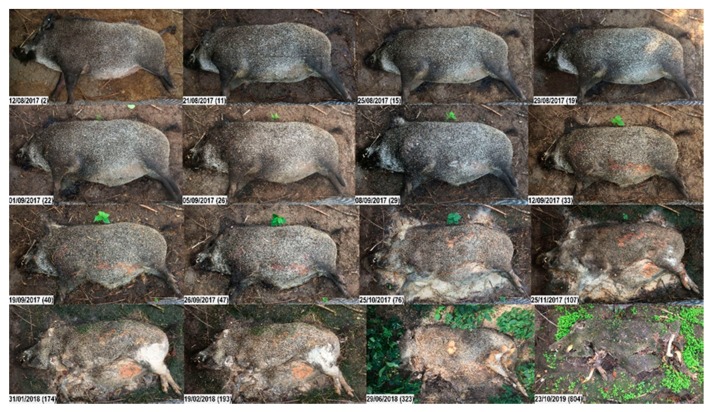Figure 3.
Decomposition of carcass 1wild. Top to bottom, left to right; numbers in brackets represent the days post-mortem. Fresh. Day 2: Cooling of the body (algor mortis), clouding of the cornea. Early decomposition. Days 11, 15: Abdominal cavity and proximal parts of limbs bloated; packages of fly eggs on the carcass; skin is intact. Days 19–29: Skin slippage while carcass still in the bloated stage. Day 33: Abdomen open, but skin still tight; maggots entered the abdominal cavity earlier, probably through natural openings (visible maggot movement inside the abdomen, see Video S2). Days 40–47: Progressive skin slippage. Advanced decomposition. Days 76–107: Moist decomposition. Days 174–323: Large amounts of organic material including the skin have turned into a hard, soap-like substance (adipocere). Day 323: Carcass still hard; surface has dried. Skeletonization. Day 804: Exposed bones of limbs and head are dry and bleached. Skin is largely intact, although moss, fungus and small plants have grown on the surface during the last two years; note the vegetation growth on and surrounding the carcass.

